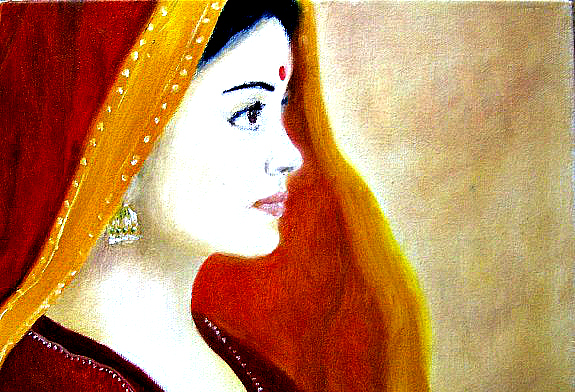4 Famous Women Of The Vedic Period
Women of the Vedic period (around 1500-1200 BCE), were embodiment of scholarly and profound achievements. The Vedas have volumes to say in regards to these women, who both complemented and supplemented their male partners. In this post we look into four famous women of the vedic period.
GHOSHA
In the Vedas, wisdom is encapsulated in myraid hymns out and from them emerge 27 women seers. Most of them are considered to be abstractions except for a few. One of them was Ghosha, granddaughter of Dirghatamas and daughter of Kakshivat, both composers of hymns in praise of Ashwins. Gosha has two hymns of the tenth book dedicated to her, each containing 14 verses. The first praises the Ashwins, the wonderful twins who are physicians; the second is an individual wish communicating her intimate feelings and yearnings for wedded life. Ghosha experienced a serious disfiguring disease, and remained unmarried at her father’s home. Her implorations with the Ashwins, and the dedication of her forefathers towards them made them cure her illness and enable her to experience married bliss.
LOPAMUDRA
The Rig Veda consists of long discussions between the sage Agasthya and his wife Lopamudra that vouches for the immense knowledge and integrity of the latter. As the legend goes, Lopamudra was made by sage Agasthya and was given as a girl child to the King of Vidarbha. The royal couple provided her the best education and brought her up in the midst of vast luxury. When she achieved an eligible age for marriage, Agasthya, the wise who was under pledges of abstinence and poverty, wanted to own her.
Lopa consented to wed him, and left her royal residence for Agasthya’s place. Subsequent to serving her spouse reliably for a long period, Lopa became worn out on his severe practices. She composed a hymn of two stanzas making an plea for his attention and affection. Soon afterwards, the sage understood his obligations towards his wife and performed both his residential and ascetic life with equivalent energy, reaching a wholeness of spiritual and physical powers. They were blessed with and child and he was named Dridhasyu, who later turned into an extraordinary poet
MAITREYI
The Rig Veda contains around one thousand songs, of which around 10 are dedicated to Maitreyi, the woman seer and philosopher.
She contributed towards the improvement of her sage-husband Yajnavalkya’s personality and the blooming of his spiritual thoughts. Yajnavalkya had two wives Maitreyi and Katyayani. While Maitreyi was knowledgeable in the Hindu sacred texts and was a ‘brahmavadini’, Katyayani was an ordinary woman. One day the sage chose to make a settlement of his possessions between his two wives and renounce the world by taking up religious vows. He asked his wives their wishes. The scholarly Maitreyi inquired as to whether all the riches on the planet would make her eternal. The sage answered that riches could just make one rich, nothing else. She then requested the wealth of immortality. Yajnavalkya was cheerful to hear this, and imparted Maitreyi the doctrine of the soul and his knowledge of attaining immortality.
GARGI
Gargi, the Vedic prophetess and child of sage Vachaknu, created several hymns that delved into the origin of all presence. When King Janak of Videha organized a ‘brahmayajna’, an philosophical congress was present and Gargi was one of the famous members. She tested the sage Yajnavalkya with a series of probing questions on the spirit or “atman” that bewildered the educated man who had till then silenced numerous scholars. Her inquiry – “The layer that is above the sky and below the earth, which is described as being situated between the earth and the sky and which is indicated as the symbol of the past, present and future, where is that situated?” – tricked even the considerably educated men.
Reach us to be a part of our whatsapp spiritual reminder group















